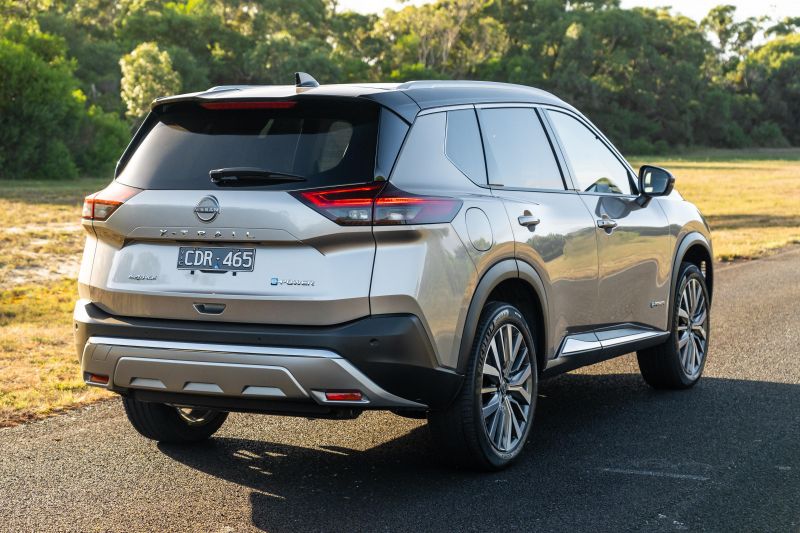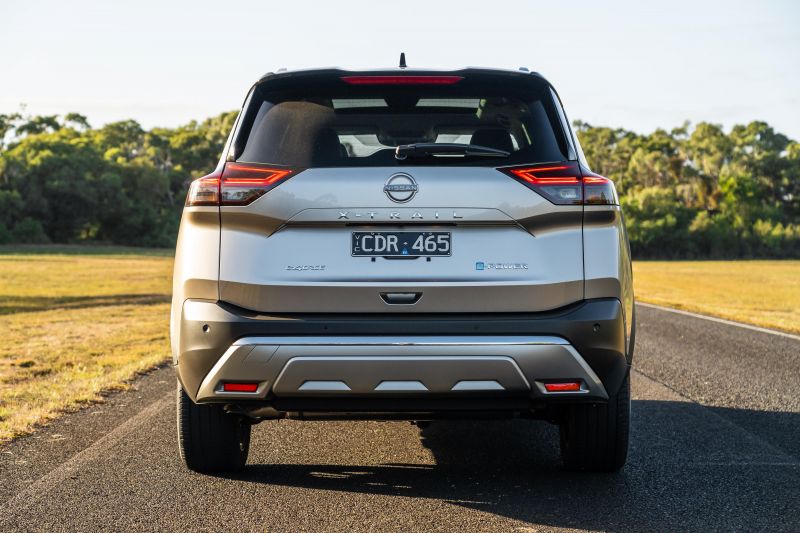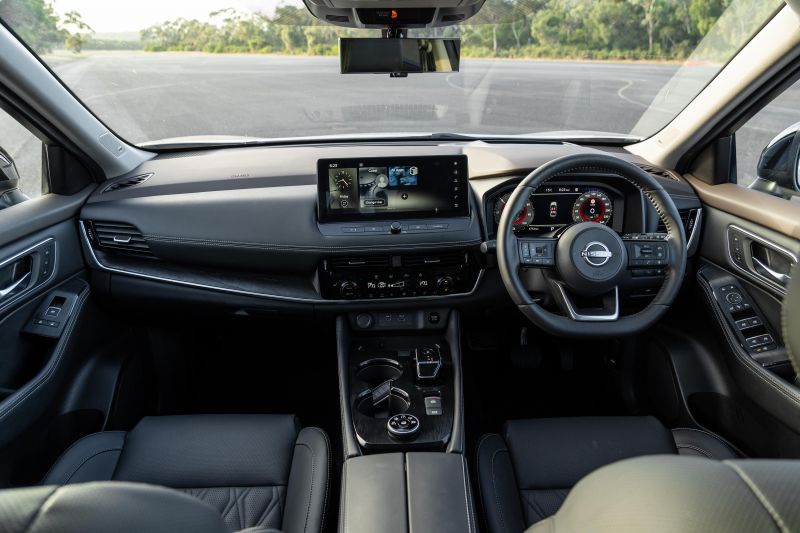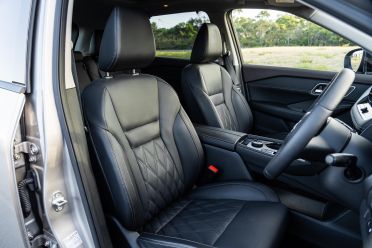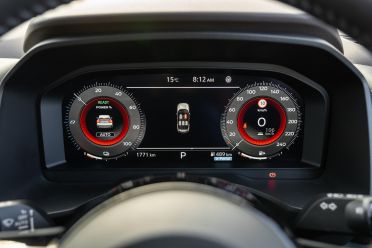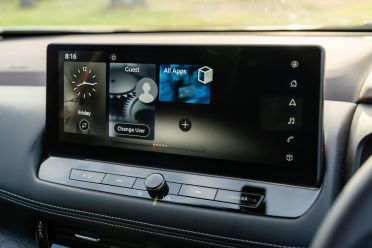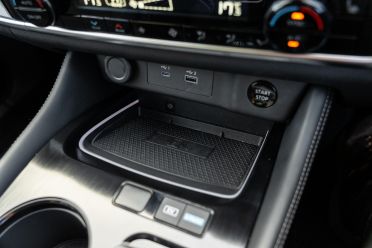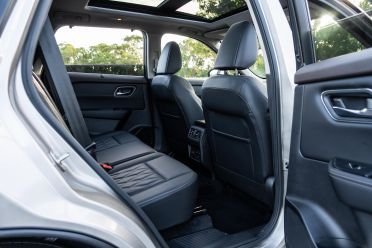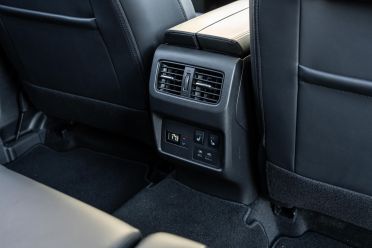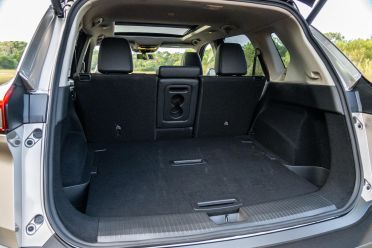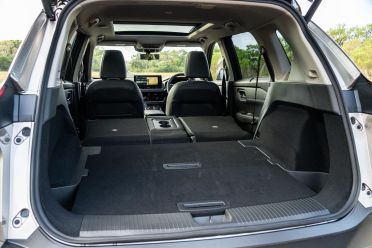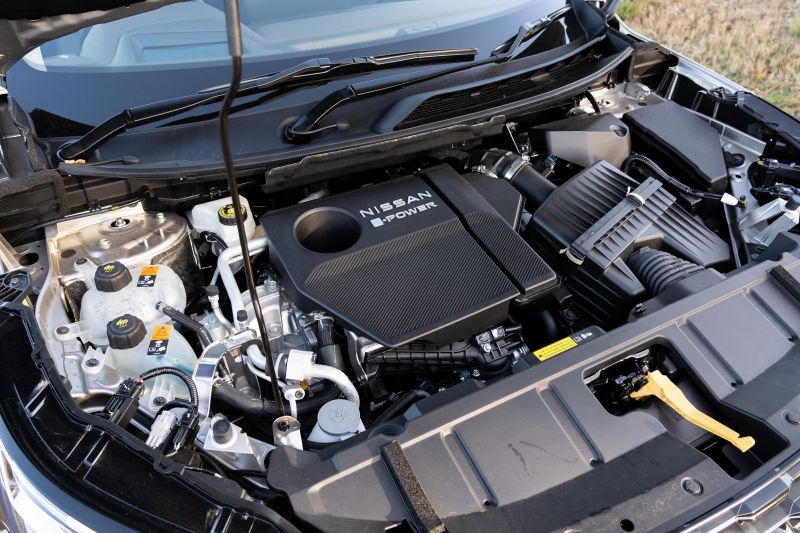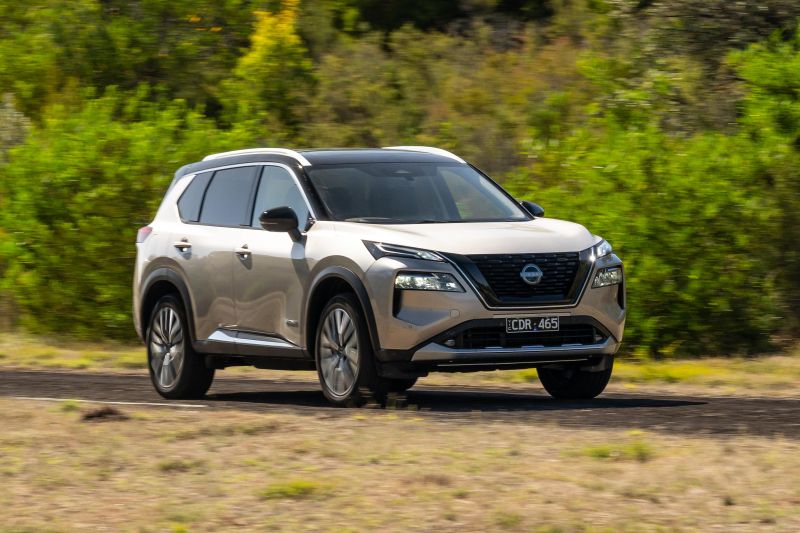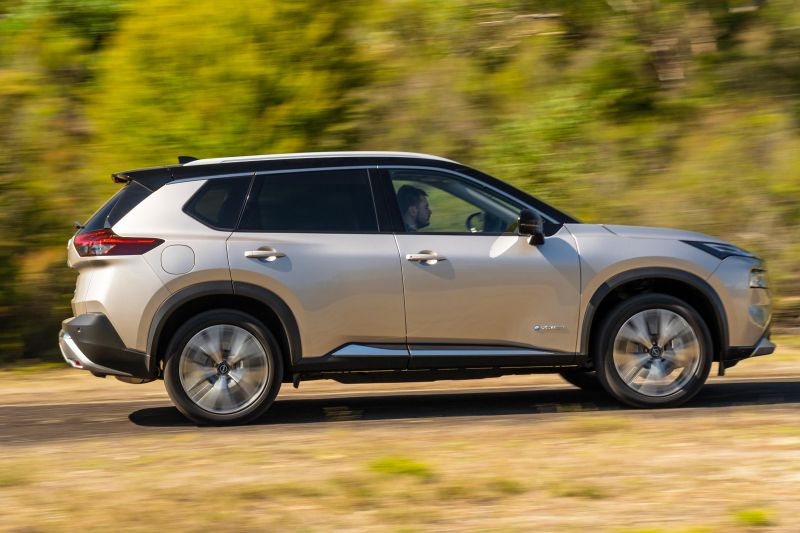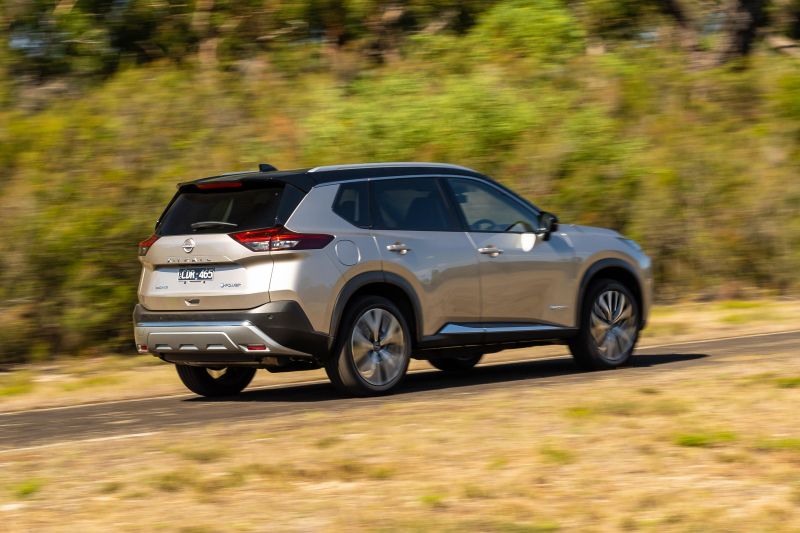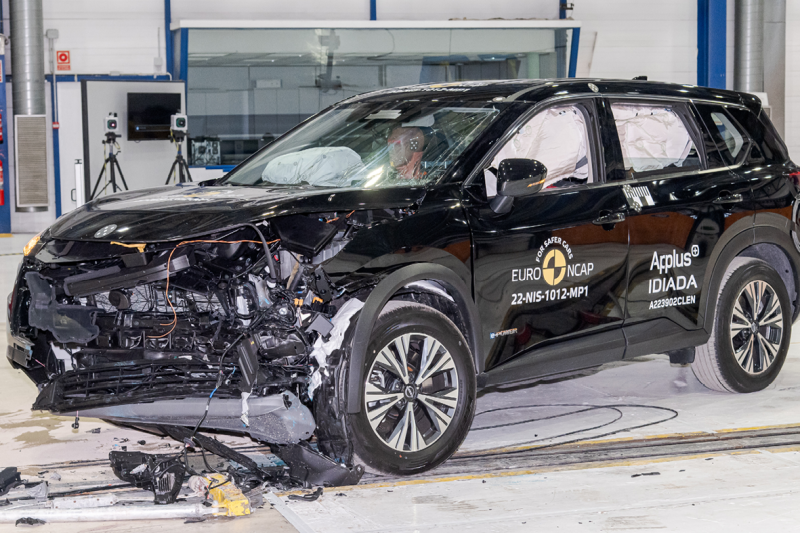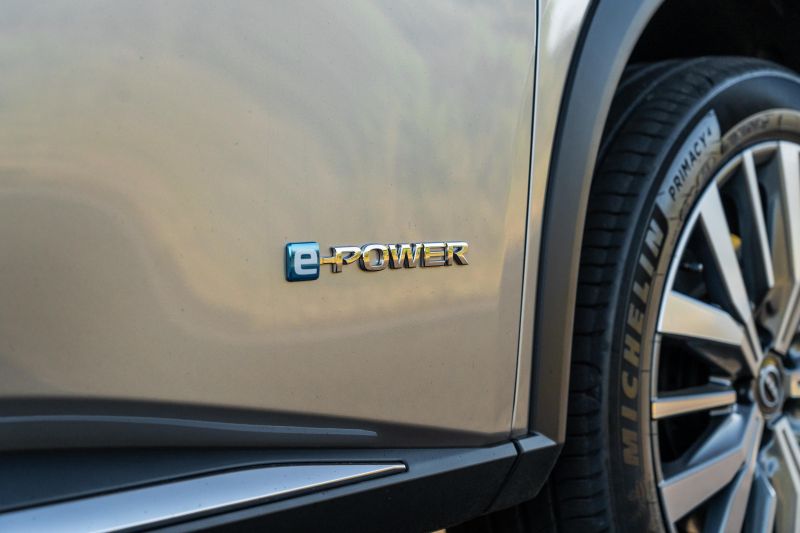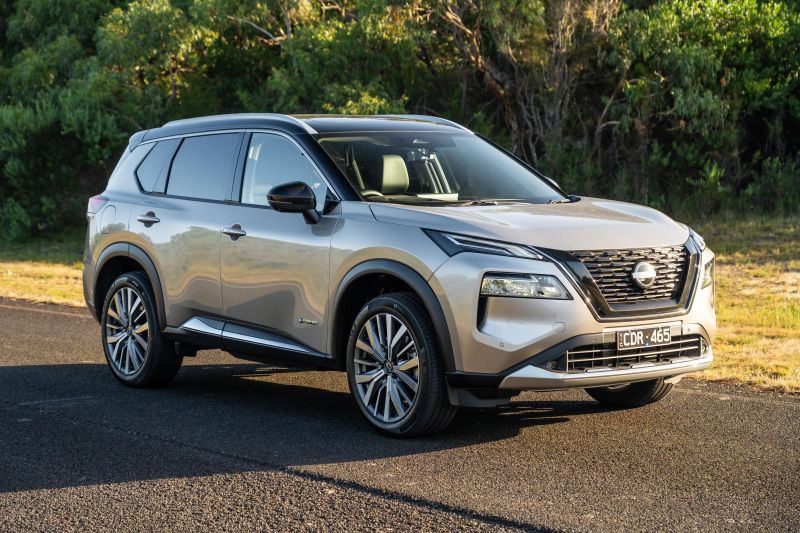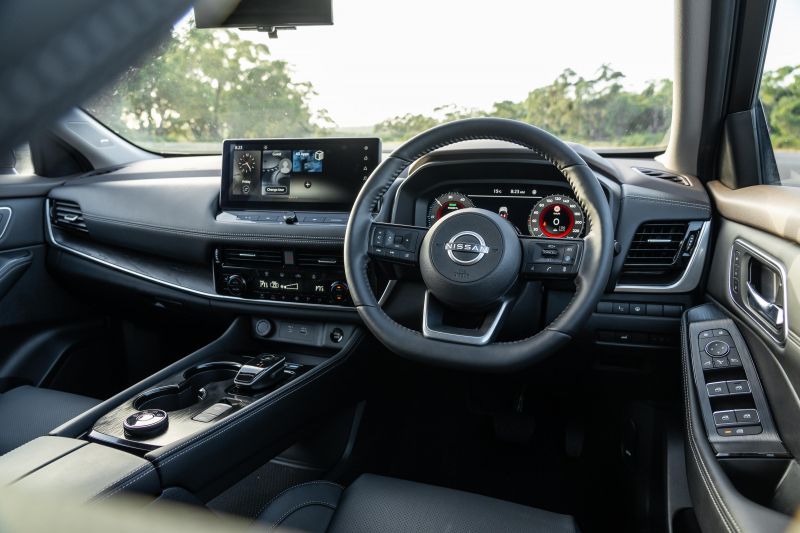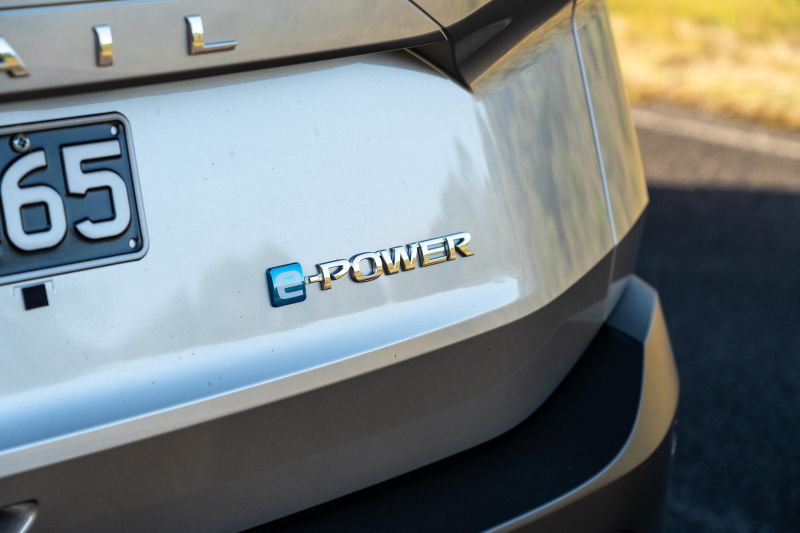
[ad_1]
This has been a very long time coming.
The Nissan X-Path e-Energy arrived in Australia early this 12 months, belatedly giving Australian consumers the chance to purchase an electrified mid-sized crossover from the Japanese model.
The previous-generation mannequin was supplied with a extra typical hybrid system in different markets, however by no means made the journey right here whilst Toyota RAV4 Hybrid gross sales surged.
Not solely have we been ready years for a hybrid X-Path, we’ve been ready fairly a while for this new-generation mannequin.
It first went on sale within the US market (because the Rogue) again in late 2020, although the e-Energy is a a lot newer addition to the worldwide X-Path line-up.
So, Nissan has come strolling in a number of years after the RAV4 Hybrid (itself belatedly) went on sale domestically, hoping to steal some consumers. It has nonetheless managed to beat the likes of Hyundai and Kia, however nonetheless this electrified X-Path is fashionably late.
Working in its favour are vital provide points for Toyota’s hot-selling hybrid SUV. Ought to consumers keep on the ready checklist for his or her Toyota, or is the Nissan a compelling different?
How a lot does the Nissan X-Path Ti-L e-Energy price?
The X-Path e-Energy vary debuted with a pair of variants: the Ti, now priced at $54,690 earlier than on-road prices, and the Ti-L, featured right here and carrying a $57,690 sticker.
Nissan subsequently revealed a extra reasonably priced ST-L variant, priced from $49,990 earlier than on-roads. Notably, Nissan remains to be with out a substitute for the likes of the base-spec Toyota RAV4 GX Hybrid, which begins at simply $42,260 earlier than on-roads.
It has additionally chosen to convey solely e-Energy fashions with all-wheel drive, which it calls ‘e-Energy with e-4orce’ however which we received’t as a result of that’s a moronic identify.
Our tester was completed in Champagne Silver, a good looking, refined color that manages to keep away from trying as boring as silver or as geriatric as beige. It, together with the opposite metallic shades, price an additional $700. Add a contrasting black roof and also you’re a $1200 premium.
All up, our tester had a drive-away value of $63,046 primarily based on a Sydney postcode.
With Australians nonetheless but to get their fingers on hybrid variations of the Honda CR-V, Hyundai Tucson and Kia Sportage, there’s little in the way in which of direct competitors.
The obvious is the RAV4, which in top-spec Edge guise rings up at $58,360 earlier than on-roads. Different top-spec hybrid mid-sizers comprise the Subaru Forester Hybrid S ($49,340), the front-wheel drive GWM Haval H6 Extremely Hybrid ($45,490 drive-away),
You would even take a look at plug-in hybrids with better electric-only vary, just like the front-wheel drive Ford Escape ST-Line PHEV ($54,940) and MG HS Plus EV Essence ($52,690 drive-away) or an entry-level all-wheel drive Mitsubishi Outlander PHEV ES ($56,490).
What’s the Nissan X-Path Ti-L e-Energy like on the within?
Seemingly each final little bit of the dated third-generation X-Path’s cabin has been banished with the brand new mannequin, right down to the ovoid window controls.
As a substitute, there’s a vastly extra trendy, premium-feeling cabin with an intriguing combine of colors and supplies. This contains trim items resembling each brushed metallic and open-pore wooden trim, whereas leatherette trim will be discovered alongside the dashboard and on the edges of the centre console.
Nearly each floor, bar the bottom reaches of the dashboard and doorways, is completed in soft-touch trim.
By way of atmosphere, the Ti-L builds on the Ti with further ambient lighting (within the doorways) and Nappa leather-based upholstery as a substitute of standard conceal. It’s not dramatically totally different in look, and the brown/black colourway will be present in lesser X-Trails, too. Curiously, even the vents on the sprint high are completed in brown.
The Ti and Ti-L improve to a bigger 12.3-inch touchscreen infotainment system (up from 9.0 inches), a 12.3-inch digital instrument cluster (up from a 7.0-inch display), and in addition acquire a head-up show.
Disappointingly, even in top-spec Ti-L trim there are not any ventilated entrance seats. You additionally miss out on the massaging perform discovered within the top-spec Mitsubishi Outlander.
The Ti-L does, nonetheless, convey a novel tan inside as a no-cost choice, as a substitute of the sunshine gray choice of the Ti one rung down.
There’s a bit occurring with all of the totally different supplies and colors, nevertheless it’s a gorgeous cabin general. A little bit of ambient lighting on the dashboard itself wouldn’t have gone astray, nonetheless.
The know-how is generally good, although the X-Path is let down by blurry, low-resolution digital camera footage.
The infotainment system is Nissan’s newest, with customisable menus and a row of useful exhausting shortcut buttons together with a day/evening mode change. Response instances are fast and the graphics pretty trendy, whereas there’s wi-fi Apple CarPlay and wired Android Auto.
The mixture of the digital instrument cluster and head-up show addresses considered one of our gripes of lesser X-Trails, and each are engaging and legible.
Nissan has resisted the temptation to shift away from bodily switchgear, and there stays a superb quantity of buttons and switches together with the easy, easy local weather management array.
Oddly, there are a handful of button blanks on this top-spec SUV, however they’re at the least hidden away from view to the best of the steering wheel.
The shifter is neat-looking, although it’s not essentially the most strong touchpoint. The leather-wrapped steering wheel is extra tactile.
Visibility is sweet because of an ethereal glasshouse, however nonetheless Nissan has included a digital rear-view mirror. This can turn out to be useful in case you’re ever loading up sufficient stuff within the X-Path’s cabin to obscure the view through the standard rear-view mirror.
Up entrance, you’ve USB-A, USB-C and 12V retailers plus a considerably small wi-fi charging pad.
By way of storage, there’s a small glove compartment and a centre console bin of common dimensions with a Mercedes-style cut up lid.
There’s a helpful shelf below the centre console that may accommodate some purses, whereas the bottle holders can accommodate 1L bottles.
Step into the second row and also you’ll discover the panoramic sunroof – normal on each the Ti and Ti-L – eats into headroom considerably.
That’s to not say this has grow to be a coupe again right here, as at 180cm tall I can nonetheless sit within the barely raised centre seat with out hitting the glass. Nevertheless, in case you are driving round taller family and friends, they might categorical some discomfort.
Ingress to the second row is simple because of doorways that open 90 levels. Again right here, you’ll discover three top-tether and two ISOFIX anchor factors for baby seats.
By way of facilities, there are local weather controls, USB-A and USB-C retailers (one every), heated outboard seats and map pockets on the mushy entrance seatbacks.
Whereas the X-Path is obtainable with a 3rd row of seating in petrol guise in Australia, in addition to with the e-Energy drivetrain in different markets, all electrified X-Path fashions domestically are two-row SUVs solely.
The third row of the X-Path is only for babies – adults will discover it a battle to climb again there, whereas these my peak will discover their head up towards the roof. Nonetheless, it’s disappointing a 3rd row isn’t accessible whilst an choice right here.
Open the ability tailgate (with hands-free operation within the Ti-L) and also you’ll discover 575L of boot area; Nissan doesn’t quote a determine for area with the second row folded.
There’s nonetheless a discoloured-looking shade like within the outdated X-Path, whereas of a lot better significance is the dearth of a spare wheel within the e-Energy. As a substitute, you’re caught with a tyre restore equipment. There’s a further 12V outlet within the cargo space.
What’s below the bonnet?
The X-Path’s intriguing e-Energy drivetrain is sort of a bit totally different to its hybrid rivals.
It contains the next:
- 1.5-litre turbo three-cylinder petrol engine (105kW/250Nm)
- 1.8kWh (usable) lithium-ion battery pack
- Two electrical motors; 150kW/330Nm entrance, 100kW/195Nm rear
System energy output is 157kW, although Nissan doesn’t quote a mixed torque determine. It’s decently fast, nonetheless, with an noticed 0-100km/h time of seven.24 seconds.
Moderately than instantly driving the wheels via a standard transmission or CVT, the petrol engine is mated to a motor-generator and an inverter. The engine is due to this fact used to cost the lithium-ion battery pack, and the latter in flip powers the drive motors.
The set-up, due to this fact, is sort of totally different to the likes of Toyota’s Hybrid Synergy Drive system, whereas it’s additionally not fairly a spread extender – the electric-only vary is so quick, Nissan doesn’t even quote a determine.
Over a loop comprising a mixture of inner-city, suburban and freeway driving, we averaged 5.9L/100km. That was truly higher than the official mixed cycle declare of 6.1L/100km. That’s nonetheless not fairly nearly as good as a hybrid RAV4 (4.8L/100km) or Haval H6 (5.2L/100km), nevertheless it bests the Forester (6.7L/100km).
How does the Nissan X-Path Ti-L e-Energy drive?
With Toyota having adopted hybrid know-how sooner than others and making it extensively accessible, we’ve grow to be accustomed to the way in which the Japanese juggernaut’s electrified know-how works.
To wit, a RAV4 Hybrid begins off in close to silence and operates in EV mode as much as round 30km/h earlier than the petrol engine fires up and also you get some CVT drone. The EV-like silence, due to this fact, is simply at low speeds.
The Nissan is sort of totally different. At freeway speeds, the petrol motor is usually inaudible, virtually such as you’re driving an electrical automobile. At these speeds, you do get a little bit of tyre and wind noise, nevertheless it’s not objectionable and it’s possible noticeable solely due to the virtually full lack of engine noise.
In one other EV-like contact, there’s an e-pedal perform like that within the electrical Leaf, permitting for (largely) one-pedal driving – the automobile nonetheless received’t come to a whole cease once you let off the accelerator, nonetheless.
The freeway driving expertise is let down solely by adaptive cruise management which generally is a bit dim-witted. The lane-centring isn’t the cleverest system on the market, nevertheless it works acceptably, whereas the site visitors signal recognition adeptly recognises new pace limits, and you may change the set pace with one button press. Simple!
Driver help settings and the like are additionally straightforward to regulate on the fly, configurable not via the infotainment touchscreen however through the digital instrument cluster. The variety of dings you hear from the driving force help options generally is a bit a lot, nonetheless.
The X-Path’s experience high quality is mostly easy. It doesn’t utterly iron out bumps and ruts on a few of Australia’s crappier roads, nevertheless it feels neither stiff nor overly floaty. The bigger 20-inch wheels of the Ti-L don’t precise a noticeable penalty on experience consolation when put next with, for instance, the 18s on the ST-L.
Take it on a winding highway and, whereas the X-Path received’t beg you to fang it down hairpins, it comports itself fairly properly when the highway will get twisty. Physique roll is well-controlled and there’s a assured really feel general to how the X-Path drives.
The steering is comfortably weighted, being neither overly mild nor inappropriately heavy. Certainly, it’s ideally weighted for the kind of automobile that is.
The idea of Nissan’s e-Energy system generally is a bit to get your head round, seeing because the petrol engine exists to energy the battery and never ship torque on to the wheels. A useful vitality move readout lets you make sense of the way it all works.
The excellent news is that all of it works largely seamlessly, with no irritating lurching or tough transitions. Stab the throttle and there’s a pleasant linear supply of energy, and the X-Path proves responsive. Overtaking manoeuvres are a breeze.
It’s not excellent, nonetheless. It’s liable to the occasional (admittedly subdued) grumbling which may happen at sudden instances. Talking of wierd noises, the audible reversing alert to warn pedestrians could unsettle them as a substitute – it sounds creepy.
What do you get?
There are three flavours of X-Path e-Energy to select from.
X-Path ST-L e-Energy highlights:
- Privateness glass
- 18-inch alloy wheels
- Computerized LED headlights
- Energy-folding, heated mirrors
- 8.0-inch touchscreen
- DAB+ radio
- 6-speaker sound system
- 4 x USB factors (1 x USB-A, 1 x USB-C entrance and rear)
- Apple CarPlay, Android Auto
- 7.0-inch instrument cluster display
- Twin-zone local weather management
- Artificial leather-accented seats
- Heated entrance seats
- Energy driver’s seat
- Fog lights
- Leather-based-wrapped steering wheel
- Auto-dimming rear mirror
- Sliding rear seats, 40:20:40 folding
- ‘Divide-N-Cover’ cargo space system
- ProPILOT with Lane hold help
X-Path Ti e-Energy provides:
- 5 seats
- 19-inch alloy wheels
- Panoramic sunroof
- Energy tailgate
- Adaptive LED headlights
- Digital rear-view mirror
- Rain-sensing wipers
- Tri-zone local weather management
- Actual leather-accented seats
- 12.3-inch touchscreen infotainment system
- Satellite tv for pc navigation
- Wi-fi Apple CarPlay
- Wi-fi cellphone charger
- 12.3-inch digital instrument cluster
- 10.8-inch projecting head-up show
- 10-way powered entrance passenger seat with energy lumbar
- Ambient lighting (simply the console)
X-Path Ti-L e-Energy provides:
- 20-inch alloy wheels
- Fingers-free energy tailgate
- Reverse-tilt energy mirrors with reminiscence
- Distant engine begin
- Heated steering wheel
- Quilted Nappa leather-based upholstery
- Driver’s reminiscence seat presets
- Heated second row outboard seats
- Rear door sunshades
- Ambient inside lighting (door)
- Bose 10-speaker sound system
Is the Nissan X-Path Ti-L e-Energy protected?
The X-Path obtained a five-star ANCAP security score primarily based on crash testing of its Nissan Qashqai sister mannequin in 2021 with which it shares the identical platform. The score covers all petrol and e-Energy variants.
It scored 91 per cent for grownup occupant safety, 90 per cent for baby occupant safety, 74 per cent for susceptible highway person, and 97 per cent for security help.
Customary options on all grades:
- 7 airbags incl. front-centre airbag
- Autonomous emergency braking (AEB)
- Pedestrian, Bicycle owner detection
- Junction help
- Reverse AEB with Pedestrian detection
- Blind-spot help
- Lane departure warning
- Lane hold help
- Visitors signal recognition
- Computerized high-beam
- Adaptive cruise management
- Reversing digital camera
- Rear parking sensors
ST-L and above add:
- ProPILOT with energetic lane-centring perform
- Entrance parking sensors
- Encompass-view digital camera
How a lot does the Nissan X-Path Ti-L e-Energy price to run?
The X-Path is roofed by Nissan’s normal five-year, unlimited-kilometre guarantee with 5 years of roadside help included.
Servicing is required each 12 months or 10,000km, whichever comes first.
X-Path e-Energy service pricing:
- 10,000km/12 months: $365.00
- 20,000km/24 months: $472.00
- 30,000km/36 months: $534.00
- 40,000km/48 months: $571.00
- 50,000km/60 months: $411.00
- 60,000km/72 months: $698.00
That quantities to $3051 over six years or 60,000km, which is $5 cheaper than the X-Path petrol over the identical interval. Nevertheless, it’s costlier than a RAV4.
Whereas the Toyota solely has 5 years of capped-price servicing, every of those visits prices simply $260. Intervals are extra beneficiant, too, at 12 months or 15,000km.
CarExpert’s Tackle the Nissan X-Path Ti-L e-Energy
The common X-Path looks like, properly, a automobile. Push the best pedal to go, push the left pedal to cease.
It’s broadly competent. It doesn’t have the plushest experience nor the sportiest dealing with of a mid-sized SUV; it doesn’t have the flashiest know-how in its section both, nevertheless it additionally avoids the usability gaffes of some rivals.
It’s a nice if unexciting all-rounder, and worthy of your shortlist. In e-Energy guise, the trusty Nissan will get much more attention-grabbing and but it’s not essentially a slam dunk.
It has fairly a special strategy to a hybrid powertrain from Toyota, and it proves easy, responsive and (typically) quiet.
Frankly, I choose the way in which this powertrain operates to a RAV4 Hybrid’s.
However there’s no getting across the truth that is costlier to service, much less fuel-efficient (at the least on paper), and never accessible from as low a value level, even when in top-spec guise it compares properly on value.
The shortage of a 3rd row of seating additionally means the Nissan doesn’t have a novel promoting level over the rival Toyota.
Nonetheless, that is one extraordinarily well-rounded, handsomely appointed mid-sized hybrid SUV. Don’t really feel like ready 12 months to take supply of a RAV4 Hybrid?
Test the Nissan out. We’d even advocate one even when ready instances disappeared in a single day.
Click on the photographs for the total gallery
[ad_2]
